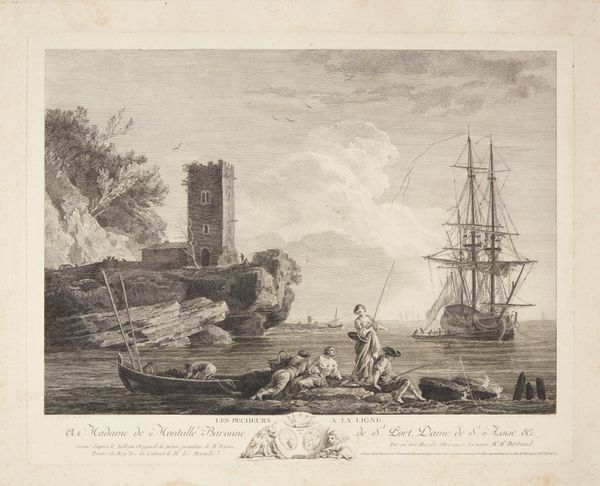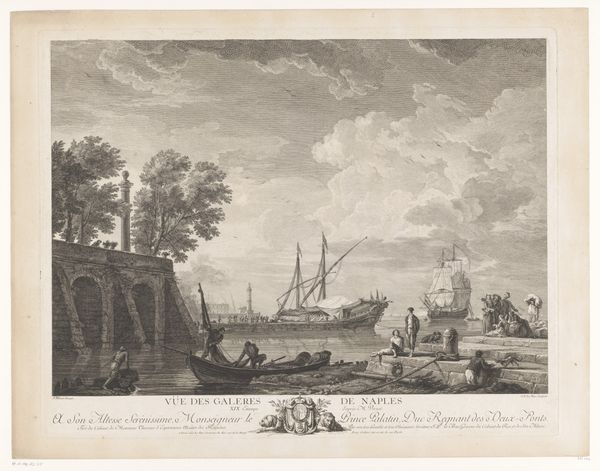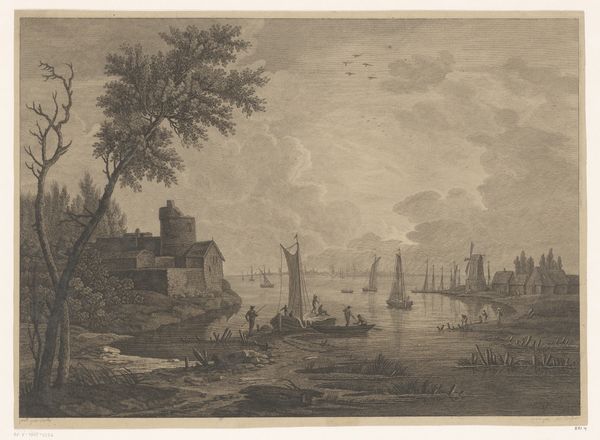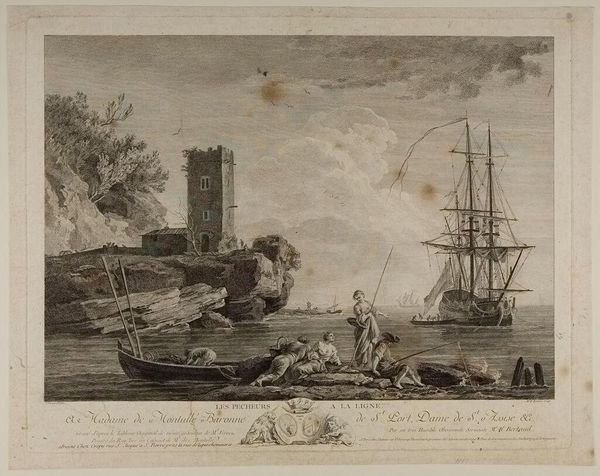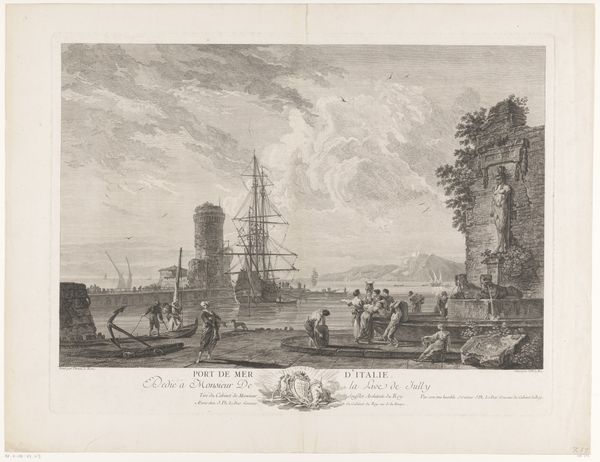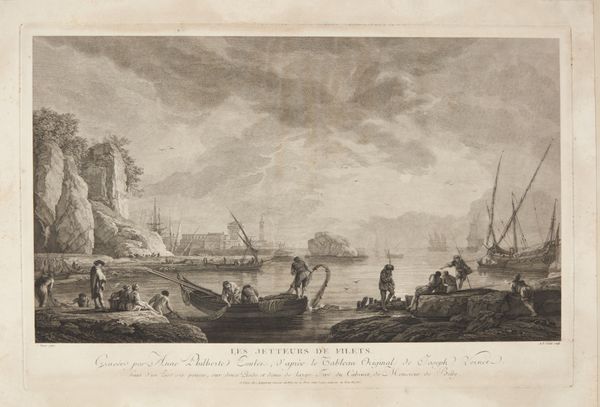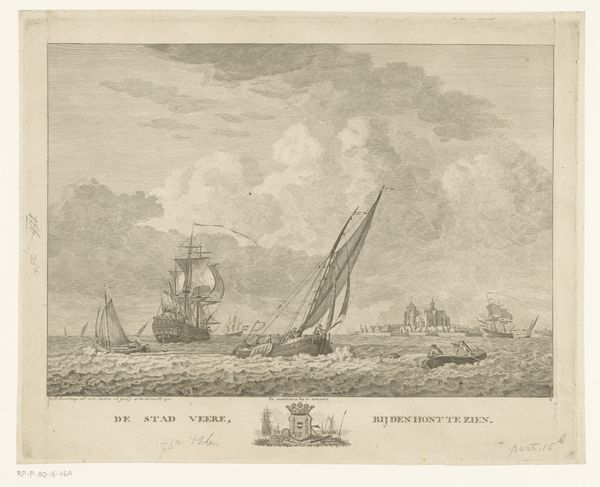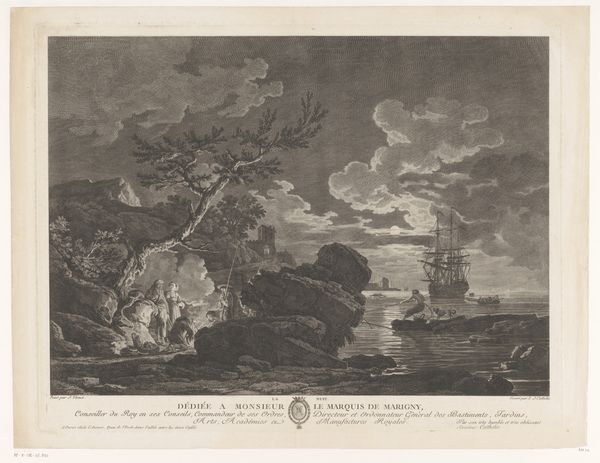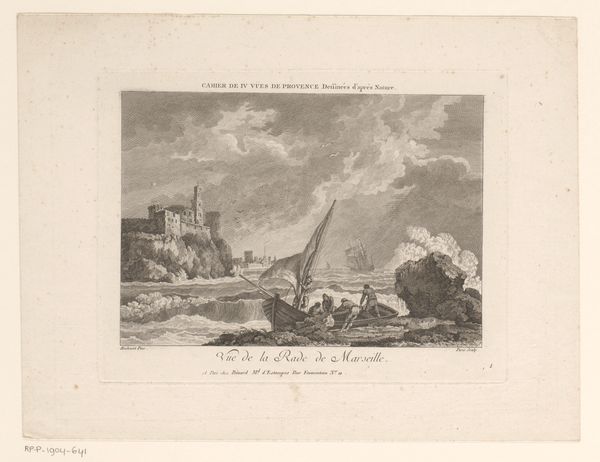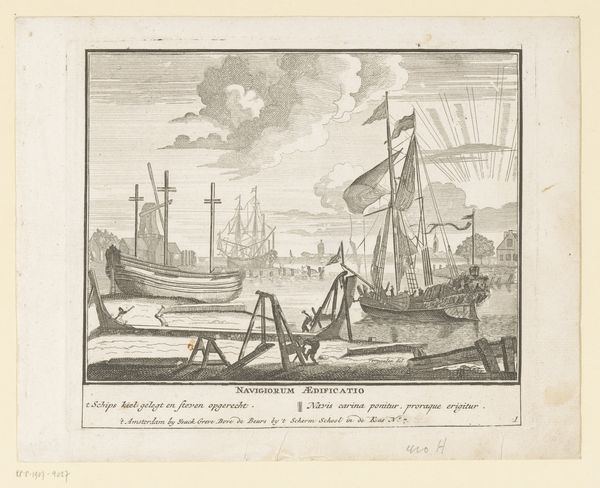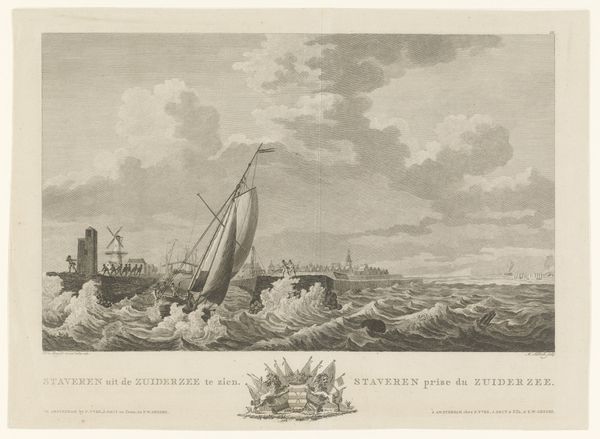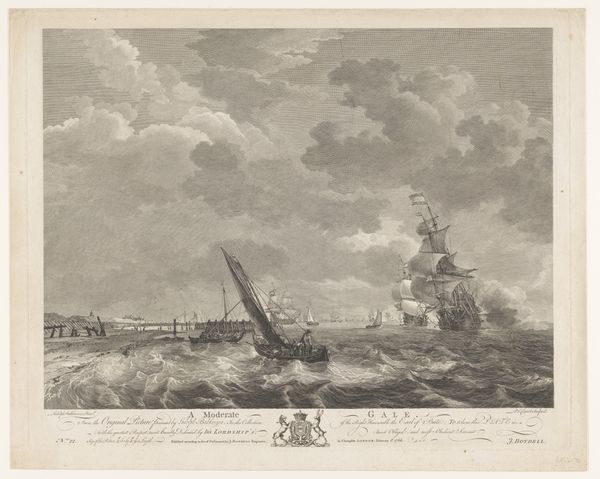
Dimensions: height 353 mm, width 457 mm
Copyright: Rijks Museum: Open Domain
Curator: Right, let’s discuss “Zeezicht met vissers,” a 1767 print attributed to Robert Daudet. It's an engraving, with this lovely Rococo aesthetic. What are your first impressions? Editor: Mmm, I get a serene, slightly melancholic feeling from this coastal scene. There's this imposing ship sort of looming in the background and a rather ancient-looking tower that make it feel less purely picturesque, almost like there's a story simmering just beneath the surface. Curator: Indeed. It captures a popular eighteenth-century fascination with landscape as a site of both aesthetic beauty and potential narrative. Prints like these often circulated within elite social circles, reinforcing specific ideas about the natural world. You have the noble peasants at the front… Editor: Right, "noble peasants"—perfectly placed and posed! Are they real folks catching fish, or are they symbols of an idealized rural life? It strikes me that the light’s almost theatrically perfect. A spotlight for their humble existence, you might say. Curator: Well, "Zeezicht met vissers" reflects both Rococo and Baroque elements, blending pleasure with hints of grander historical or mythological themes. The ‘noble fisherman’ motif romanticized labor while reinforcing a sense of order—a common theme within landscapes appreciated by the aristocratic elite. Notice the imposing ship looming. These fishing vessels represent commerce but also perhaps a nation’s strength at sea. Editor: Absolutely, and the crumbling tower, a picturesque ruin. Is it just me, or is there a slightly unsettling tension between this idyll of nature and this encroaching world of ships and stone? Perhaps that is a projection… I also notice the light, shadow, detail, especially considering the constraints of printmaking, it makes a delicate atmosphere for the viewer to consider. Curator: That contrast is quite typical; the ruins offer a historical anchor, emphasizing the transience of human endeavor against the enduring power of nature, a standard trope. Meanwhile, Daudet made the most of engravings for widespread dissemination, playing a significant role in shaping artistic taste and political narratives across Europe. It's all so very picturesque and political all at once, you know? Editor: Very well. So we’ve got nature, commerce, perhaps some national pride… a lot to unpack for one print. But I leave it feeling… I feel like I am now a man of leisure in the 1700s, just off frame… pondering a new commercial voyage. Curator: Indeed, an artwork worth contemplating. Thank you for your perspectives!
Comments
No comments
Be the first to comment and join the conversation on the ultimate creative platform.

